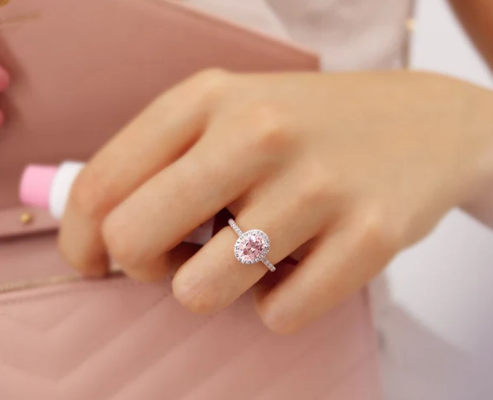The fashion industry has long been a reflection of societal norms and values, often reinforcing traditional gender roles and expectations. However, in recent years, there has been a significant shift towards challenging these conventions and embracing gender fluidity. This transformation is not only reshaping the fashion landscape but also promoting a more inclusive and diverse understanding of identity. This article explores the evolving relationship between fashion and gender, highlighting how breaking down stereotypes and embracing fluidity is revolutionizing the industry and society at large.
Breaking Down Gender Stereotypes in Fashion
Historical Context and Evolution
Historically, fashion has played a pivotal role in reinforcing gender binaries. Clothing was often designed to emphasize the differences between men and women, with distinct styles, colors, and fabrics associated with each gender. For example, men’s fashion traditionally focused on functionality and simplicity, while women’s fashion emphasized beauty and adornment. These distinctions were not merely stylistic but also served to perpetuate societal norms regarding masculinity and femininity.
The 20th century saw the beginning of a shift in these rigid norms. The women’s liberation movement of the 1960s and 1970s brought significant changes, as women began to adopt more traditionally masculine clothing like trousers and suits. This period marked the start of challenging gender-specific fashion, though the changes were often limited to women adopting elements of men’s fashion rather than a true blending of styles.
Contemporary Designers Leading the Change
In the contemporary fashion landscape, numerous designers and brands are actively working to dismantle gender stereotypes. They are creating collections that transcend traditional gender boundaries, offering clothing that is designed to be worn by anyone, regardless of gender identity.
Designers like Alessandro Michele of Gucci and Jonathan Anderson of JW Anderson have been at the forefront of this movement. Michele’s collections for Gucci often feature a blend of traditionally masculine and feminine elements, such as men in lace blouses and women in tailored suits. Anderson’s work similarly blurs gender lines, with his designs frequently incorporating androgynous silhouettes and materials.
Moreover, brands like Telfar and Eckhaus Latta are not only designing gender-neutral clothing but also promoting a broader message of inclusivity and acceptance. Telfar’s tagline, “It’s not for you—it’s for everyone,” encapsulates the brand’s ethos of universal fashion, challenging the notion that clothing should be gender-specific.
Embracing Gender Fluidity in Fashion
Gender-Neutral and Unisex Fashion
Gender-neutral and unisex fashion are gaining traction as consumers increasingly reject binary gender norms. These styles are characterized by their versatility and inclusivity, designed to be worn by anyone, regardless of gender. This trend is not just about aesthetics but also about fostering a sense of freedom and self-expression.
Unisex fashion often emphasizes comfort and practicality, with loose-fitting silhouettes, neutral colors, and simple designs. Brands like Agender and 69 are dedicated to creating clothing that defies traditional gender categories, focusing on pieces that can be styled in multiple ways to suit individual preferences.
The rise of unisex fashion is also evident in the growing popularity of certain styles that have transcended gender boundaries. For instance, the oversized hoodie, a staple in streetwear, is now commonly worn by people of all genders. Similarly, items like denim jeans and plain white t-shirts have become universally accepted, highlighting the shift towards more fluid fashion choices.
Impact on Society and Culture
The embrace of gender fluidity in fashion is not just a trend but a reflection of broader societal changes. As more people identify outside the traditional gender binary, fashion is evolving to meet their needs and preferences. This shift is fostering greater acceptance and understanding of diverse gender identities.
Fashion’s move towards gender fluidity is also influencing mainstream culture and media. Celebrities like Billy Porter, Jaden Smith, and Harry Styles are known for their gender-fluid fashion choices, challenging public perceptions and inspiring fans around the world. These high-profile figures are helping to normalize gender non-conforming fashion, making it more accessible and acceptable.
In addition, the rise of social media platforms has given a voice to individuals who might not fit into traditional gender categories. Influencers and activists use these platforms to share their personal styles and experiences, creating communities that celebrate diversity and challenge conventional norms.
Challenges and Future Directions
Despite the progress made, the fashion industry still faces challenges in fully embracing gender fluidity. One significant hurdle is the persistence of gendered marketing and retail environments. Many stores and brands continue to segregate clothing into men’s and women’s sections, which can be alienating for those who do not conform to these categories.
Moreover, the industry must address issues of representation and inclusivity beyond gender. This includes considering factors such as size, race, and disability, ensuring that fashion is truly accessible and representative of all people.
Looking to the future, the continued evolution of fashion towards greater inclusivity and fluidity seems promising. Education and advocacy are crucial in this regard. By educating designers, marketers, and consumers about the importance of gender inclusivity, the fashion industry can continue to make strides towards a more accepting and diverse landscape.
In conclusion, the relationship between fashion and gender is undergoing a profound transformation. By breaking down stereotypes and embracing fluidity, the fashion industry is not only redefining style but also contributing to a more inclusive and understanding society. This evolution reflects a broader cultural shift towards recognizing and celebrating the diversity of human identity, paving the way for a future where fashion is truly for everyone.





